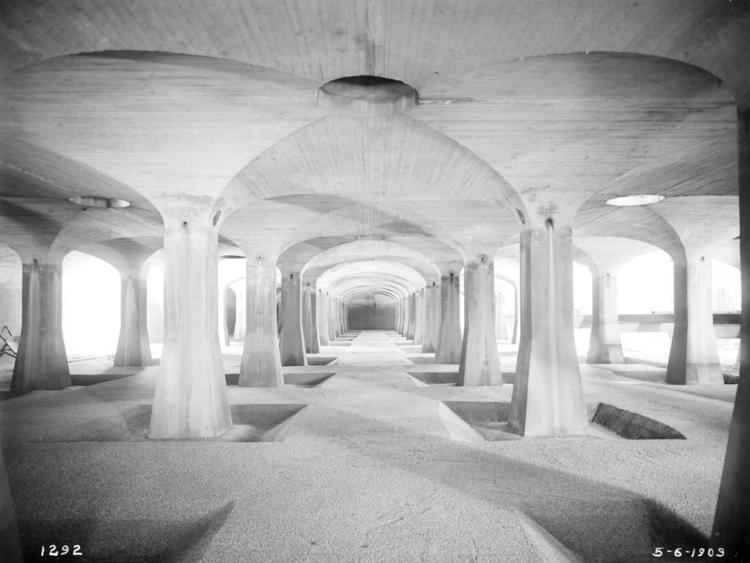Have you ever hiked around the Upper Rox Reservoir and wondered why it was built? Read on for a quick exploration of water infrastructure in Northwest Philadelphia.
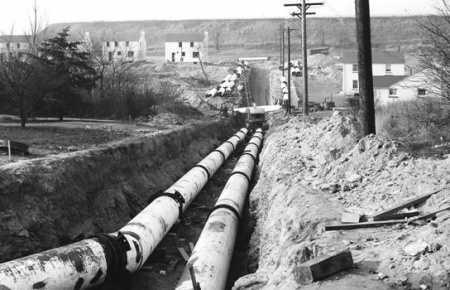
Looking north on Granville Street toward Upper Roxborough Reservoir, 1948
By the end of the 1850s, it was already apparent to Henry P.M. Birkinbine, chief engineer of the Philadelphia Water Department, that the northwestern section of the city—including Roxborough, Manayunk, and Chestnut Hill—would need to be served by its own water works. The high ground in this area was far above the reach of existing reservoirs in the city, which supplied water by gravity to homes and businesses.
Wells in populated areas were becoming unpalatable and in many cases unhealthy. A small private water works, built to serve Germantown and its vicinity, used a spring and dam of water along Papermill Run (now called Monoshone Creek), but Birkinbine predicted that its capacity would soon be outstripped by the rapidly growing population.
“Manayunk and Roxborough [contain] a population numbering about twelve thousand,” Birkinbine wrote in a report to City Councils in September 8, 1859. “Of these, at least three thousand are operatives employed in the different factories. This part of the city is much in need of a supply of water for culinary, manufacturing and sanitary purposes, and for protection against fire, as the property in the manufactories is of great value, and now almost entirely without protection against fire…. From the dense population of parts of the district, the wells have become so contaminated, that the water in but few of them is now fit for culinary purposes. The necessity of a supply for manufacturing and mechanical purposes, is evident.”
Birkinbine proposed a water works along the Schuylkill, with a pumping station above the Flat Rock Dam at Shawmont, and reservoirs located higher up the steep banks of the river, which would provide water by gravity through distribution mains in the streets. This system would serve not only the immediate vicinity, but other areas of the city as well.
Construction began on these works after the end of the Civil War, with the pumping station at Shawmont completed in 1869. The steam-powered pumps force water uphill into a reservoir (about 366 feet above city datum) located at present-day Eva and Dearnley Streets in Roxborough.
To increase the capacity of the Roxborough Works and allow water to flow by gravity to a larger part of the city, the pumping station on the Schuylkill was expanded in the 1890s, and a much larger reservoir was built higher up the ridge (the Upper Reservoir, about 414 feet above city datum), along Port Royal Avenue about a block from Ridge Avenue.
Roxborough Pumping Station at Shawmont, 1903
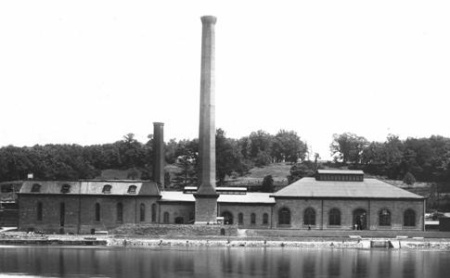
In the first decade of the 20th century, the city spent more than $30 million to construct slow sand filter plants around the city. Two of these plants were at the Lower and Upper Roxborough Reservoirs. Once it went into operation citywide in 1909, the filtration system greatly reduced the incidence of water-borne diseases such as typhoid fever, which had been transmitted by the untreated (and sometimes sewage-tainted) river water.
Upper Roxborough Filters
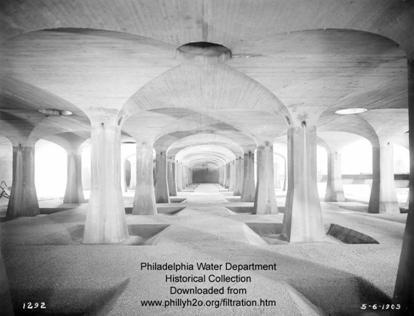
Upper Roxborough Filters, with sand in place but before water was let in, 1903
By the 1940s, rapid sand filters began to supplant slow sand filters as the technology of choice for water purification systems. By the early 1960s, filtration plants at Torresdale, Belmont and Queen Lane had been updated with this new technology as well as other automation features. More efficient and powerful electric pumps also meant that water could be delivered to the highest parts of the city from other pumping stations and reservoirs.
“Unsuited to the needs of a modern city, the Roxborough water works were rapidly becoming obsolete and their capacity was too limited to meet future community growth.” – Philadelphia Water Department 1962 Annual Report
In 1962, the pumping station and two filter plants were closed down, and the upper reservoir was drained of its 147 million gallons. Today, underground storage basins at the Upper and Lower Roxborough sites are now filled by the pumps of the Queen Lane plant.
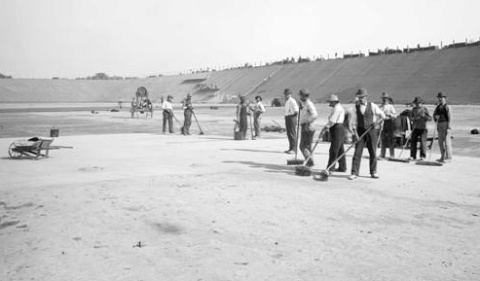
Upper Roxborough Reservoir – repairs to the asphalt lining, 1897
MORE:
Visit Philly H2O for a collection of historical material relating to Philadelphia’s waterways.
